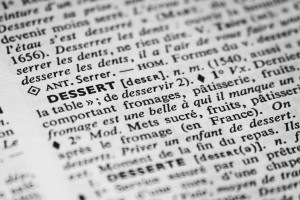Does Low Fat = Low Calorie?
No, No, and No!
What Does Low Fat and Low Calorie Mean?
Here’s the FDA definitions:
- Low Fat – 3 grams fat or less per serving
- Reduced or Less Fat — at least 25% less fat per serving than the “regular” full-fat food
- Fat Free – Less than 0.5 gram of fat per serving
- Low Calorie – Less than 40 calories per serving
- Calorie Free – Less than 5 calories per serving
- Light — At least 50% less fat or 1/3 fewer calories per serving than the “regular” full-fat version
Check The Serving Size, The Fat Grams, And the Calories
Remember to check the serving size listed on the Nutrition Facts panel of your food. If the food comes without a label there are tons of online resources to check portion sizes and the nutrition facts. Here’s a muffin example: the package label on a box of muffins lists the fat content – for one muffin – as 20 grams. If the fat content per muffin is reduced to 15 grams per muffin, the muffin can be called reduced fat but it is still has five times more fat (in grams) than the 3g per serving that fits the guidelines for low fat.
When The Fat Comes Out – What Goes In?
Mostly sugar. In a lot of low fat and fat free foods, sugar, flour, and other full calorie ingredients, replace the fat. Consequently, there’s very little, if any, reduction in calories.
Check these out:
Peanut Butter, 2 tablespoons:
- Regular: 190 calories, 16g fat
- Reduced fat: 190 calories, 12g fat
Wheat Thins (16 crackers):
- Regular: 150 calories, 6g fat
- Low Fat Wheat Thins: 130 calories; 4g fat
Oreos (3 cookies):
- Original: 160 calories, 7g fat
- Low Fat Oreos: 150 calories, 4.5g fat
Fig Newtons (2 cookies):
- Regular: 110, 2g fat
- Fat free: 100 calories, 0g fat
Granola (1/2 cup):
- Regular: 210 calories, 6g fat
- Low fat granola: 160 calories, 2.2g fat
Tortilla Chips (1 oz.):
- Regular: 141 calories, 7.3g fat
- Light tortilla chips: 132 calories, 4.3g fat
SocialDieter Tip:
Just because a product says it’s low fat or fat free don’t go hog wild and eat it with no concern. There often isn’t much of a caloric difference between a low or fat free version of a food and the regular version because the fat that’s taken out is usually replaced with some full calorie combination of sugar and starch.

